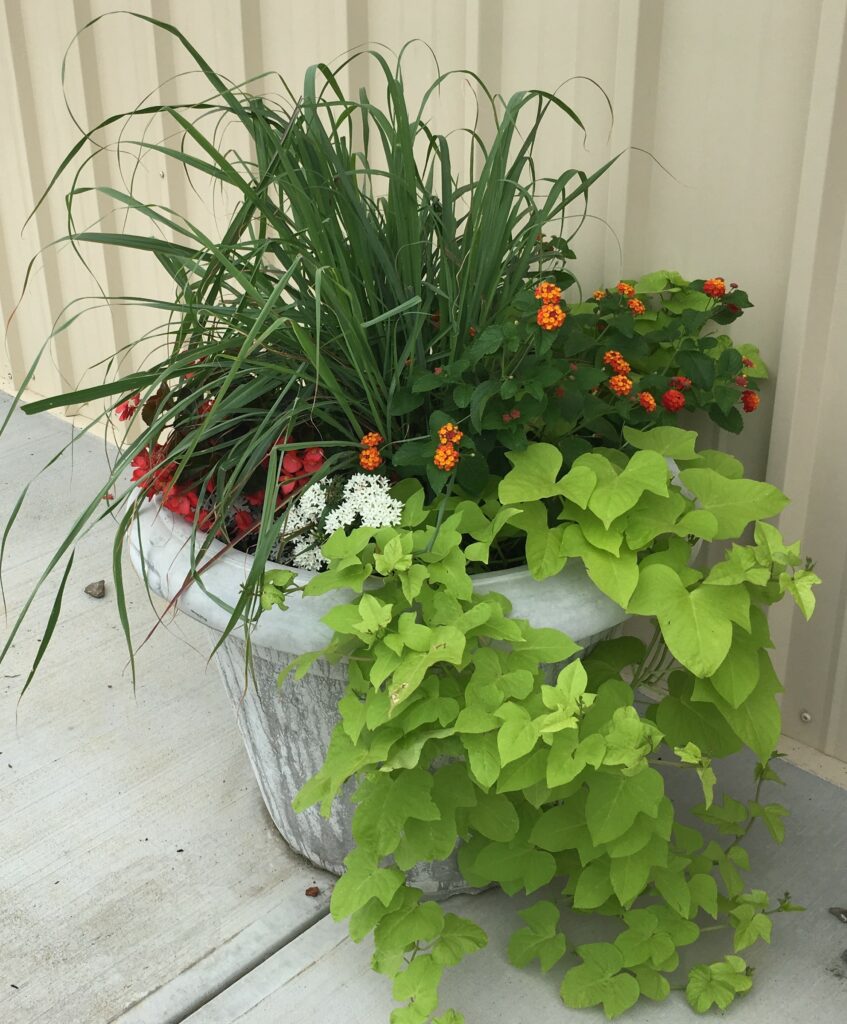May Gardening Tips
go.ncsu.edu/readext?790055
en Español / em Português
El inglés es el idioma de control de esta página. En la medida en que haya algún conflicto entre la traducción al inglés y la traducción, el inglés prevalece.
Al hacer clic en el enlace de traducción se activa un servicio de traducción gratuito para convertir la página al español. Al igual que con cualquier traducción por Internet, la conversión no es sensible al contexto y puede que no traduzca el texto en su significado original. NC State Extension no garantiza la exactitud del texto traducido. Por favor, tenga en cuenta que algunas aplicaciones y/o servicios pueden no funcionar como se espera cuando se traducen.
Português
Inglês é o idioma de controle desta página. Na medida que haja algum conflito entre o texto original em Inglês e a tradução, o Inglês prevalece.
Ao clicar no link de tradução, um serviço gratuito de tradução será ativado para converter a página para o Português. Como em qualquer tradução pela internet, a conversão não é sensivel ao contexto e pode não ocorrer a tradução para o significado orginal. O serviço de Extensão da Carolina do Norte (NC State Extension) não garante a exatidão do texto traduzido. Por favor, observe que algumas funções ou serviços podem não funcionar como esperado após a tradução.
English
English is the controlling language of this page. To the extent there is any conflict between the English text and the translation, English controls.
Clicking on the translation link activates a free translation service to convert the page to Spanish. As with any Internet translation, the conversion is not context-sensitive and may not translate the text to its original meaning. NC State Extension does not guarantee the accuracy of the translated text. Please note that some applications and/or services may not function as expected when translated.
Collapse ▲May is here and our gardens are coming alive. Below are some tips for what you can do in your garden and landscape during the month of May:
Lawn
- Leave clippings on the lawn – they return nutrients and water to the soil and do not contribute to thatch.
- Thatch build up is the results of over fertilization. If your lawn has a thatch layer thicker than a half inch, power rake in May to remove thatch.
- Aerate lawns only if the soil has become compacted. The best time to aerate a lawn is when the grass is actively growing from May to June.
- Frequent mowing encourages lawns to thicken and reduces weed problems. Maintain bermudagrass, zoysia and centipede lawns at 1” tall and St. Augustine lawns at 3-4”.
- Spray broadleaf weeds with a post emergent herbicide. The best product to use will depend on the weeds you are trying to control and your turf type.
- Check lawns for white grubs and apply insecticides by mid-June. Best to control Japanese beetle grubs in May or early June. Use insecticides labeled for grubs like Merit, Advance Lawn Grub Control, and Season Long Grub Control.
Trees, Shrubs and Flowers
- Prune spring-flowering plants, such as forsythia, azalea, camellias, oakleaf hydrangea, and spirea immediately after they finish flowering but before mid-July. If you wait until late summer or fall to prune, you will remove next season’s flowers.
- Scout for bagworms on shrubs and trees; especially pay attention to junipers, Leyland cypress, and cedars. Cut out or spray with Sevin, malathion, or B.t. (Dipel).
- Be on the outlook for two common rose diseases: blackspot and powdery mildew. Many fungicides are available to control these diseases including: Daconil, funginex, and immunox being the more common ones. Spray applications should be every 7 to 10 days starting in the spring and after heavy rains.
- Keep an eye on dogwoods, deciduous magnolias (tulip trees), crape myrtle and viburnum for powdery mildew.
- Replace winter flowers (pansies, snapdragons, etc.) with heat loving annuals like coleus, sweet potato vine, lantana, vinca and petunias.

Replace winter flowers (pansies, snapdragons, etc.) with heat loving annuals like coleus, sweet potato vine, lantana, vinca and petunias.
Fruit, Vegetables and Herbs
- Plant late season vegetables such as pumpkins, peppers, cucumbers, okra, and sweet potatoes.
- Do not forget to sidedress or fertilize your vegetable garden six to eight weeks after germination.
- Harvest onions, garlic and potatoes when their tops start to die back.
- Mulch around vegetable plants to conserve moisture and reduce disease problems.
Jessica Strickland is an Agriculture Extension Agent, specializing in horticulture for North Carolina Cooperative Extension in Wayne County.
Learn More!
- Sign up for Wayne County Extension Gardening email list to receive timely gardening tips.
- Learn more by following us on Facebook and Instagram
- Gardening questions? Ask a Master Gardener Volunteer. The Wayne County Extension Gardener Volunteer Plant Clinic is open on Mondays and Wednesdays from 10 a.m. to 1 p.m. (April through August) to help you with your gardening questions. Contact by phone at 919-731-1433, email at master.gardener@waynegov.com or stopping by the Wayne County Extension Office at The Maxwell Regional Agricultural & Convention Center (3114B Wayne Memorial Drive, Goldsboro).




